#Automotive and Futurism Tags:
Explore tagged Tumblr posts
Text

#Tesla and Elon Musk Tags:#Cybertruck#ElonMuskArt#TeslaArt#ElectricVehicles#ElonMuskFans#TeslaCybertruck#SpaceXInspired#MuskMoments#TechAndArt#Automotive and Futurism Tags:#CarArt#FuturisticVehicles#ElectricCarCulture#AutoIllustration#FuturismInArt#TechInnovation#ModernVehicles#CyberpunkAesthetic#Artistic Style Tags:#PopArtStyle#MarkerArt#HandDrawnArt#VividColors#ContemporaryArt#CreativeIllustration#DynamicArt#VisionaryArt#General and Pop Culture Tags:#TechCulture
3 notes
·
View notes
Text

1972 Aston Martin V8
The 1972 V8 came in various body styles, including a coupe and a 2+2 version, the latter offering extra seating for two passengers in the rear. The coupe version was the more popular of the two, offering a sleeker, more aggressive profile. Its spacious and luxurious cabin, combined with features such as power windows and air conditioning, provided a level of comfort that was on par with the best luxury cars of the era. The car’s build quality and bespoke interior were hallmarks of the Aston Martin brand, appealing to wealthy buyers looking for both performance and prestige.
As with all Aston Martins, the V8 was an expensive luxury vehicle, with a price tag that put it out of reach for the average buyer. However, it attracted an elite clientele, including celebrities, royalty, and businessmen, who sought both the performance and the status symbol that came with owning an Aston Martin. The V8 model's success helped the company continue to thrive during a difficult period in the automotive industry and set the stage for future developments in their performance models.
By the time production of the original V8 ended in the early 1980s, the model had undergone several updates and improvements. The 1972 Aston Martin V8, however, is often regarded as one of the standout early models due to its combination of design, performance, and exclusivity. Even today, the 1972 V8 is a highly sought-after classic car, admired by collectors and enthusiasts alike for its elegance, performance, and the important role it played in the evolution of Aston Martin.
81 notes
·
View notes
Text
Hi! I make a lot of traditional art, I love to draw and build in mc, I'll be posting here a lot since I am just so very front stuck.
Feel free to send asks!! I do builds based on pictures mostly because I'm still warming up to building in mc, but I'll happily build something if you give me refs and a few days lol. Here's one of my large-scale projects from a few weeks ago!! Took me 2 days to complete;
Ahh, this will be very very long 0.o so I'm just going to...
*snip snip snip...*
Much better!!!!
Okay, let's continue


Might get in trouble for posting this because this is on a soon to be super active lore server... ewps!! Whatever. If anyone recognizes this in the near future; no, you don't. But oouugguhsh whoops whoooooooo careeeessssss!!!!!
��・❈{Basics!}❈・·
} {☼˖˚Name:
Planet , Apollo
} {☼˖˚Age:
17-18
17 bodily, don't be weird!!
} {☼˖˚Pronouns:
He/it
} {☼˖˚Gender:
Male :( (transmale :) )
} {☼˖˚Orientation:
Men :(
} {☼˖˚Species:
Uhhh!! Guess. Not human
·・❈{System Stuff!}❈・·
} {☼˖˚Source:
Lifesteal!!
} {☼˖˚Role:
School fronter/Frequent fronter , babysitter/part time caretaker
} {☼˖˚Subsystem?:
Nah
} {☼˖˚Verbality:
Meh, I'm bad at talking sometimes, but I engage in conversation
} {☼˖˚Source Talk?:
Yah!
} {☼˖˚Doubles?:
Yah!
} {☼˖˚Sourcemates?:
Yaahhh!!!!!!!! :3
} {☼˖˚What info do I need to know?:
We are a DID system!
Don't immediately ask for discord, we are anxious.
We're a therian!!
Content creator in our spare time.
I want to make this very clear that we are so very 16 years old, 19+ you can interact, just don't be weird.
·・❈{Stuff!!!}❈・·
SPLATOON!!
AUTOMOTIVE!!!!
MECHANIC WORK!!!
Building in mc!!
Grinding in mc (I've played for 57 hours in a single world that has been open since the 31st of December. This was posted on 1/8/24. I have full enchanted netherite and that huge spaceship up there.)
·・❈{Boundaries!}❈・·
} {☼˖˚Flirting?:
As a joke, yeah!!
If serious, keep in mind we're 16 bodily, have a partner system, dating another guy, and I'm mlm
} {☼˖˚Touch?:
Platonic, yeah!!! Hugs, kiss on the cheek/forehead, whatevr, as long as yr not weird abt it :3
} {☼˖˚DMs?:
Yeah!!! I'll give you our discord after a few conversations
} {☼˖˚Pings?:
Yah!!
} {☼˖˚Friend Requests?:
Yah!!!!!!
} {☼˖˚Faceclaims:
Teehee :3c


Tags I use!!
#breakfast my beloved
-Baconnwaffles0 art I adore/my own posts about him (I rarely use this anymore,,)
#plnetl text
- text posts!
#friends tag
- people who I talk to daily / cool people
#plnetl art / #plnetl doodles
- my art! / doodles from asks
#plnetl media
- irl pictures :3c
#gorgeous / #oh gorgeous
- things I think are pretty or I just say "oh wow!!"
#lifesteal#lifestealsmp#lifesteal smp#canine theriotype#osddid#wolf therian#actually did#did osdd#did system#intro post#introduction#blog intro#introvert#looking for friends#looking for moots#looking for mutuals
10 notes
·
View notes
Text
An Overview of 75 Years of Racing Triumphs for Porsche

Porsche and racing have had a strong link for 75 years. The German automaker has been a dominant force on the track, racking up victories and pushing the boundaries of automotive technology. Several iconic moments and drivers define Porsche's rich racing history.
Porsche's early strides in car racing began in the late 1940s. The legend began in 1948 with the birth of the Porsche 356. The car established the Porsche brand and laid the foundation for future racing success. Three years later, Porsche secured its first major win with a class victory at the prestigious 24 Hours of Le Mans. The victory showcased the car's endurance and performance.
Then, the 1950s saw Porsche continue its ascent in motorsports. Drivers like Gilberte Thirion carved their names in racing history. Victories at legendary races like the Carrera Panamericana and Targa Florio cemented Porsche's reputation as a builder of competitive sports cars.
Next, the 1960s marked a golden age for Porsche racing. The arrival of the iconic 911 brought a street legend and a dominant force on the track. Porsche's first Formula One win in 1962 with the 804 further solidified its engineering prowess. Le Mans remained a particular focus, with Hans Herrmann's near-miss in 1969 followed by a dream come true in 1970 - Porsche's first overall victory at the grueling 24-hour race.
Over the following forty years, Porsche continued its constant innovation and success. In the 1980s, the 956, featuring a revolutionary monocoque chassis, dominated Le Mans for an unprecedented six years straight. The partnership with McLaren to develop the TAG Turbo engine further demonstrated Porsche's ability to push boundaries. Victories in unexpected arenas like the Paris-Dakar Rally with the 953 and 959 showcased the versatility of Porsche engineering.
The 1990s saw the birth of the Porsche Carrera Cup, a one-make series that continues to nurture aspiring drivers today. Le Mans victories continued with the 911 GT1 in 1998, a testament to the enduring legacy of the 911 platform.
In the new millennium, the car manufacturer saw new challenges and triumphs. The American Le Mans Series saw the rise of the RS Spyder prototype, piloted by drivers like Timo Bernhard. In 2017, another incredible feat at Le Mans took place. After falling behind early, the 919 Hybrid staged a remarkable comeback to secure a third consecutive victory. Porsche's racing journey has gone beyond endurance racing. The TAG Heuer Porsche Formula E team's historic one-two finish in Mexico City in 2022 marked a significant achievement in electric racing.
Porsche's racing legacy extends beyond the sheer number of trophies. With its ever-evolving regulations, Le Mans has been a testing ground for groundbreaking technologies. From lightweight materials to turbocharging and advanced aerodynamics, Porsche has consistently used the field of motorsport to develop innovations that trickle down to its production cars. Efficiency has also been a cornerstone of Porsche's racing philosophy.
From early victories in fuel consumption categories to the recent success of the 911 GT3, Porsche has proven that speed and efficiency can coexist, winning awards for fuel consumption in their race cars.
3 notes
·
View notes
Text



MUSE INFO
Name: Leticia Ortiz
Source: The 2001 film The Fast and the Furious. When interacting with her, there might be violence, mild blood, injury, and death. Except for violence, all of these things will be tagged as cw: [subject] when applicable.
Name: Leticia Ortiz
Also known as: Letty (preferred)
Eyes: Dark brown
Hair: Dark brown
Face claim: Michelle Rodríguez
Pronouns: She/her
Age: Eighteen
Height: 5'4"/163 cm
Sexual/Romantic orientation: Bisexual/biromantic (semi-closeted)
Occupation:
Car mechanic.
Truck robber.
Personality: There are two big things you need to know about Letty. Firstly, she's the type of person who can't be made to do something she doesn't wanna do. Secondly, she's never been able to keep herself out of trouble. She doesn't take shit or allow herself to be pushed around, having more than enough attitude and sass to snap back. She tells things like they are and prefers to face situations head on.
Letty does tend to look annoyed most of the time, and it's pretty 50/50 whether she actually is or not. She's been known to be territorial and bossy.
She's a loyal, strong, tenacious person, willing to throw punches and take hits when the situation calls for it.
Letty was born in Los Angeles, California in the USA. She's had an interest in cars since she was ten and grew up in the racing scene, which she actively participates in on the streets.
Verses:
I'm bored. Let's hit somewhere up. (Pre-TFATF) – Anything that takes place before the first film.
How about you put your money where your mouth is? (The Fast and The Furious) – Takes place during the events of the first Fast & Furious.
...Keep driving. – (Post-TFATF) Follows Letty during the years between the first film and Los Bandoleros.
Let's see where the road goes. (Crossovers) – A generic verse for crossovers.
Thread tag: Muse: Letty Ortiz
Visage tag: You're prayin' to the car gods, man.
HC/Info tag: If you want an adrenaline rush...
Relationship tags:
How ya livin', girl? – w/Mia Toretto, love interest, friend, and part of the found family.
DOM! – w/Dominic Toretto, love interest, friend, and part of the found family.
Miscellaneous:
While I don't currently write Letty from Los Bandoleros and onward, that will likely change in the future.
She drives a 1997 Nissan 240SX... with a few modifications done to it.
The automotive garage she works at is called D•T Precision Auto Shop.
Truck robbing is how Letty and her friends primarily fund their lifestyle, though.
She speaks Spanish as a second language.



3 notes
·
View notes
Text
Battery-Free RFID Sensors Market Report, Size, Share, Trends & Analysis 2033
According to the UnivDatos, growing demand for sustainability and the need for efficient, real-time data tracking would drive the Battery-Free RFID Sensors market. As per their “Battery-Free RFID Sensors Market” report, the global market was valued at USD 581.2 Million in 2024, growing at a CAGR of about 12.3% during the forecast period from 2025 - 2033 to reach USD Million by 2033.

Sustainability and saving energy have become an increasing problem experienced by different industries, and the market for the Battery-free RFID Sensor has grown rapidly. With the help of these energy harvesting techniques, these sensors do not need batteries to drive their functionalities. This innovation overcomes the concerns on environmental impact related to the disposal of batteries and lowers maintenance costs. The market based on vehicles is driven by the rise of the Internet of Things (IoT), the growing need for real-time data collection, and the drive towards greener technologies. Beyond this, such sensors are being progressively adopted by sectors such as logistics, healthcare, and retail to use them for applications like inventory management, patient monitoring, and supply chain optimization.
The Growing Demand for Battery-Free RFID Sensors
The primary reasons that is driving the adoption of Battery-Free RFID Sensors in the global market include the rising demand for sustainable, energy-efficient products and reduced requirements for maintenance. Recently, due to the green initiative across corporate entities and industries that aim at shifting from battery-operated sensors to battery-less systems to avoid environmental pollution due to battery disposal and frequent maintenance. These sensors rely on energy from the environment, like the radio frequency (RF) waves, hence they are designed for use in long-term, without any need for maintenance, including applications like supply chain, automobile tracking, and assets. In addition, the Internet of Things (IoT) and the requirement for quick and accurate data acquisition in logistics, healthcare, and manufacturing are popularizing the RFID technology, and battery-less sensors provide a perfect and inexpensive solution for widespread applications. This trend is especially seen in the sectors that need uninterrupted data transfer, for example, logistics and transport, since RFID sensors are used for tracking, inventory, and other operations. The advancement in technology will also exert further pressure on the uptake of Battery-Free RFID sensors in both developed and developing nations in the future as the world shifts to digital and environmentally friendly solutions.
Latest Trends in the Battery-Free RFID Sensors Market
The Battery-Free RFID Sensors market is experiencing dynamic shifts, influenced by evolving consumer preferences and innovative product developments. Key trends include:
Energy Harvesting Innovations
Energy Harvesting has emerged as one of the most important trends in the Battery-Free RFID Sensor market as it enables the RFID sensors to operate without batteries and eliminates the cost of battery replacement expenses. Energy harvesting techniques, such as ranging from capturing ambient RF signals, vibrations, light, or heat energy, allow these sensors to run in places where it is hard to provide power sources. This innovation reduces the need for battery replacement, which is expensive and harmful to the environment. The prospect of this automated continuous operation of these sensors has uses in important areas such as logistics, healthcare, automotive, and manufacturing. For instance, in workshops where products or shelves may be placed, these integrated RFID tags can generate power from the surroundings and transmit inventory and other asset information without battery replacement. With the advancement and maturity in the efficiency of energy harvesting, we can foresee even the Battery-Free RFID Sensors being utilized in more areas with less cost, and increased adaptability across various industries.
Access sample report (including graphs, charts, and figures): https://univdatos.com/reports/battery-free-rfid-sensor-market?popup=report-enquiry
Integration with IoT and Smart Technologies
Battery-Free RFID Sensors in IoT is one of the many ways through which industries are embracing interconnectivity in their operations. While IoT systems develop, there is a requirement for more and more low-power sensors to implement, which can govern and transmit data in an efficient manner. Battery-Free RFID Sensors are the most suitable for these applications because they are designed with no built-in batteries, which require replacement, they have long-range operation capability, and hence are suitable for large IoT networks. For example, in actual supply chain management, RFID sensors can help track the goods, supervise their usual condition, and alter inventory systems immediately, which is beneficial for supplying concrete ideas to optimize the operation. Smart factory solutions are another relevant sector where such sensors are used to help manufacturers identify the condition of the equipment, locate the parts, and optimize production. The implementation of these sensors in IoT frameworks improves operationality, makes it cost-effective, and creates additional opportunities for automation and useful analytics, which makes Battery-Free RFID a key asset of the digitization process across multiple industries.
Increasing Adoption in Automotive Applications
Battery-free RFID Sensors become more prominent in the automotive sector, owing to the developments taking place in the elite sector, emphasizing more and more connectivity, automation, and energy conservation. It is important to note that these sensors provide important uses in several areas, such as tire pressure checks, vehicle tracking, and supply chain management in the automobile industry. Due to higher adoption of EVs and autonomous driving, the automobile industry needs sensors that are low power-consuming and can work continuously without the need to be recharged like most batteries. Battery-free RFID sensors can help trace parts within the supply chain or detect the state of the vehicles’ components through supply chain tracking, vehicle elements’ monitoring in real-time, or identification of tire condition or any other safety element. For example, RFID-based TPMS ensures that a driver is notified of possible safety concerns and removes the need to replace the battery. With the growth of electric vehicles and other forms of automation, having energy-efficient, low-maintenance sensors such as Battery-Free RFID will be of significance to the long-term continuity and consistency of the entire automotive sector’s value chain.
Integration with Blockchain and Data Security
An interesting trend, which is gradually being adopted in the field of Battery-Free RFID Sensors, is their connection with blockchain technology for increasing their security and traceability. There are several industries where concealment of data integrity and authenticity is very crucial, these include: supply chain, pharmaceuticals, and food industries. Battery-free RFID Sensors integrated with blockchain help in having a chronological record of transactions, resulting in the generation of a public ledger that cannot be altered. For instance, in the pharmaceutical sector, RFID sensors can follow the circulation of the drugs through production, distribution, and delivery, all the processes being recorded and encrypted by blockchain. By so doing, it minimizes the risk of counterfeiting, fraud, and theft and helps in compliance with the set regulations. RFID and blockchain are complementary technologies, and they have the potential to increase adoption in industries that require high levels of security, traceability, and transparency; this growth is expected to increase as the technology develops and these two technologies are adopted in even more important uses.
Miniaturization and Cost Reduction
Miniaturization and cost reduction can be identified as the significant factors that have an impact on the Battery-Free RFID Sensors market. Currently, the RFID sensors are available in a small and cheap form and are easily incorporated into various companies and businesses. The possibility of creating compact sensors contributes to the utilization of a considerable number of such sensors due to the absence of high expenses. This particular application is most beneficial in industries like retailing, where they can encode unique RFID tags on the physical good or goods, or manufacturing industries where thousands and thousands of components may be encoded, taking up next to no space or increasing the cost significantly. This has the advantages of lowering the production cost of these sensors and increasing the applicability of these technologies in small businesses and establishing markets, where affordability plays a major role.
Battery-Free RFID Sensors on the Rise: The Future of RFID Innovation
Battery-Free RFID Sensors Market is expected to boost in the coming few years because of certain advancements in technologies, environmental consciousness, and an upsurge in the use of smart applications across the industries. As industries in the automobile sector, logistics and manufacturing industries, and the healthcare sector look for methods of improving productivity while at the same time cutting costs and impact on the environment, technological tools such as Battery-Free RFID Sensors are deemed ideal because of their ability to last longer than other kinds of sensors. These novelties, along with the emergence of smart energy harvesting technologies, IoT, an increased use of blockchain, and miniaturization tendencies, naturally redefine the market situations, providing more opportunities to grow, save, and develop. Taking advantage of the latest innovations with a heightened concern for the environment, Battery-Free RFID Sensors will act as the key to change and improvement of business processes all around the globe while increasing their functionality of data collection without the need for external power sources.
Contact Us:
UnivDatos
Contact Number - +1 978 733 0253
Email - [email protected]
Website - https://univdatos.com
Linkedin- https://www.linkedin.com/company/univ-datos-market-insight/mycompany
0 notes
Text
Research - Automotive/Vehicle Design for Film and Television
George Hull - Concept Artist

George Hull is a leading conceptual designer in Hollywood, known for creating unique and imaginative worlds for films. He was born in India and raised in the U.S., starting his creative path with a BFA Degree in Industrial Design. His talent was recognized by Industrial Light & Magic (ILM), where he began his career working on films like "Forrest Gump." After six years at ILM, he established George Hull Design.
His Work and Notable Projects:
George Hull specializes in the visual development of sets, vehicles, props, and environments, ranging from quick pencil sketches to detailed 3D models and production paintings. He has worked on numerous high-profile science fiction films.
Dune - Ornithopter

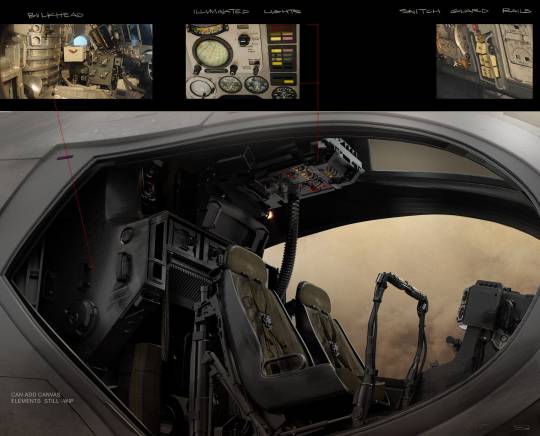
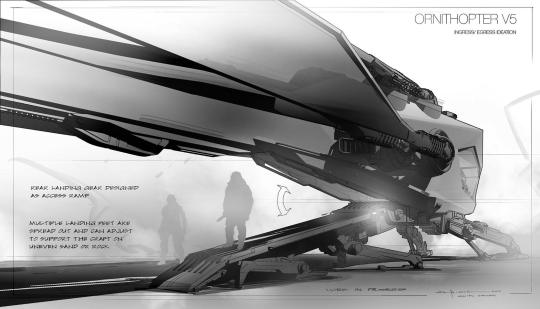
The design for the ornithopters in Denis Villeneuve's Dune (2021 film) was conceived by Denis Villeneuve himself, working closely with storyboard artist Sam Hudecki
Villeneuve's vision for the ornithopter was to make it "muscular" and resemble a dragonfly and a helicopter, while also appearing realistic and adhering to basic laws of science. Concept artist George Hull also worked extensively on their development for the film.
It's worth noting that other adaptations of Dune had different ornithopter designs, and the original novel by Frank Herbert left much to the reader's imagination, describing them as having "wings like a bird flapping in the air."
Bladerunner - Spinner
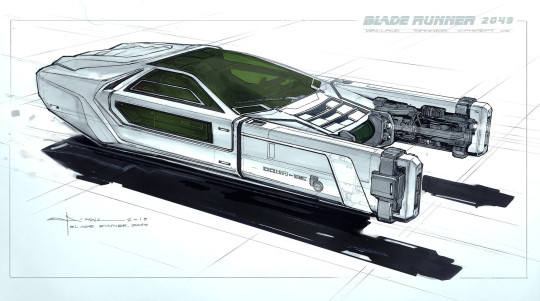


George Hull, a senior concept artist for Blade Runner 2049, was instrumental in designing K's "spinner" flying car. Building upon Syd Mead's iconic original, Hull's work evolved the spinner into a more angular, robust, and utilitarian vehicle, reflecting the film's brutal aesthetic.
Key aspects of K's spinner design include:
Evolutionary Design: It's a clear descendant of the 1982 spinner but with a more modern, raw, and less integrated look, akin to real-world automotive design shifts.
Brutality and Utility: Director Denis Villeneuve's emphasis on "brutality" translated into the spinner's stark metallic finish and its appearance of having components "tagged on," giving it a functional, improvised feel.
George Hull's Influence: Hull's initial sketches defined the vehicle's angularity and overall "brutal" presence, with many core design elements making it into the final film.
Cold Color Palette: The predominantly metallic finish contributes to its utilitarian and dystopian atmosphere.
Functional Features: It boasts distinctive scissor doors and a unique three-wheel configuration for ground travel, with a retractable rear wheel for takeoff. In-universe, it uses a combination of combustion, jet, and anti-gravity engines for VTOL capabilities.
Aesthetic Template: K's spinner wasn't just a vehicle; its design language heavily influenced the overall visual style of Blade Runner 2049, setting the tone for other vehicles and environments.
This meticulous design, from its paint job to its hydraulic doors, ensured the spinner felt like an authentic, weathered piece of machinery in a harsh future.
0 notes
Text
Auto Dealership Cleaning: What Customers Notice Before the Cars

When a customer walks into your auto dealership, their first impression isn't of your top-selling SUV or the sleek new sports car in the front row. It’s the cleanliness of your space — the shining floors, spotless windows, fresh-smelling air, and dust-free counters. Whether consciously or not, people begin forming opinions about your business before they even glance at the vehicles.
In an industry where high price tags and trust go hand-in-hand, the way your dealership looks and feels plays a critical role in the buying experience. Let’s explore why professional cleaning in auto dealerships is more than just maintenance — it’s part of your brand.
First Impressions Start at the Door
Before a salesperson even says hello, customers notice the details: Are the glass doors smudged? Is the welcome mat clean or worn out? Are there fingerprints on the front desk? These small cues influence how customers perceive your professionalism and trustworthiness.
A dealership that looks neglected, dusty, or outdated can subconsciously signal a lack of care — not just in maintenance but potentially in service quality, too. On the other hand, a dealership that’s sparkling clean sets a tone of attention to detail and pride in your business. It subtly tells visitors, “We care about our space, and we’ll care about you too.”
Showroom Shine: More Than Just Cars
Your showroom is your stage. It’s where your product — the vehicles — are presented, but it’s also where the overall customer experience unfolds. Shiny cars won’t make up for dirty tiles, dusty blinds, or overflowing trash bins. Cleanliness in the showroom reflects directly on your product’s value.
Regular floor polishing, window cleaning, and wiping down of high-touch areas (like door handles and desks) not only keep your facility looking pristine but also create a safer, more pleasant environment. In today’s post-COVID world, visible cleanliness is even more important — it reassures customers that your dealership prioritizes health and hygiene.
The Waiting Area Experience
For service customers or those finalizing paperwork, the waiting area is often where they spend a significant chunk of time. If the coffee table has dust rings, the magazines are dog-eared, or the restrooms are poorly maintained, it can sour the entire experience — even if the car deal goes smoothly.
A clean, well-maintained lounge shows respect for your clients’ time and comfort. It also helps reduce complaints, boost customer satisfaction, and increase the chances they’ll return for future services or purchases.
Cleanliness Builds Trust in Service Bays and Repair Areas
Believe it or not, even the service department makes an impression — especially for returning customers. While these areas are expected to be a bit more rugged, a well-organized and clean service bay communicates that technicians care about precision and cleanliness. It builds trust in the quality of work being done on the customer’s vehicle.
Plus, regularly cleaning oil stains, dust, and debris improves workplace safety and shows that your dealership operates to high professional standards.
Why Professional Cleaning Services Matter
Most auto dealerships don't have the time, resources, or training to manage a high standard of cleaning in-house — especially across large, diverse areas like showrooms, service bays, offices, and washrooms. That’s where a dedicated dealership cleaning service comes in.
Professional cleaners know how to use the right techniques and products for automotive glass, showroom tiles, office carpets, and more — ensuring every area is treated with care. They also help implement eco-friendly practices and regular sanitization routines, aligning with the image modern customers expect.
Conclusion
Before your customers see the horsepower, torque, and leather interiors — they see your floors, your desks, and your restrooms. Don’t let something as preventable as dust, dirt, or smudges cost you a sale.
Auto dealership cleaning isn’t just about appearances — it’s a silent ambassador of your brand. Make sure it speaks confidence, professionalism, and trust from the moment customers walk in.
0 notes
Text
Digital Tyre Certification: The Future of Quality Validation
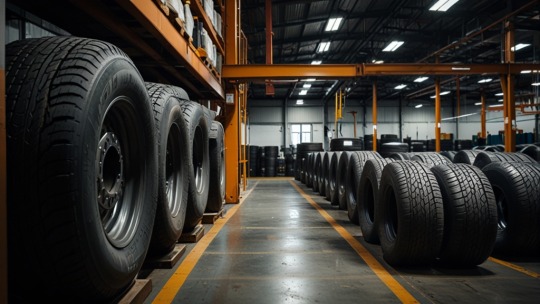
As the automotive industry rapidly embraces digital transformation, tyre certification is also evolving. Traditional paper-based validation is giving way to digital tyre certification—a faster, more transparent, and traceable method of proving product quality and compliance.
Digital certification offers numerous benefits. Manufacturers can now upload test results, compliance documents, and performance data into secure cloud-based platforms. Regulatory bodies, OEMs, and end-users can instantly access this information, ensuring real-time verification and zero paperwork delays. This shift not only enhances operational efficiency but also significantly reduces the risk of forgery or outdated records.
Moreover, digital certification systems are often integrated with QR codes or RFID tags on the tyre itself. This allows anyone—from customs officials to car manufacturers—to scan and retrieve critical information, such as test results, country of origin, and environmental compliance status. It simplifies audits and boosts confidence in the supply chain.
For exporters, digital certification is becoming a game-changer. Many international markets now demand stricter quality controls, and digital documentation ensures smoother customs clearance and faster market entry. Tyre testing labs and regulatory authorities are increasingly building blockchain-secured digital certification frameworks to enhance authenticity and traceability.
In a world where speed, safety, and sustainability are non-negotiable, digital tyre certification is setting a new standard for the industry. It’s not just a technological upgrade—it’s a step toward global alignment in product quality, regulatory compliance, and environmental responsibility. The future of tyre validation is digital, and it's already rolling forward.
0 notes
Text
[IOTE2025 Shenzhen Exhibitor] Exhibitor Introduction Collection
With the rapid development of artificial intelligence (AI) and Internet of Things (IoT) technologies, their integration is becoming increasingly close and is profoundly influencing technological innovation across various industries. AGIC + IOTE 2025, the 24th International Internet of Things Exhibition — Shenzhen Station, will take place from August 27 to 29, 2025, at the Shenzhen World Exhibition & Convention Center. IOTE 2025 is set to be an unprecedented professional exhibition event in the field of AI and IoT. The exhibition scale will expand to 80,000 square meters, focusing on the cutting-edge progress and practical applications of “AI + IoT” technology. It will also feature in-depth discussions on how these technologies will reshape our future world. It is expected that over 1,000 industry pioneers will participate to showcase their innovative achievements in areas such as smart city construction, Industry 4.0, smart home life, smart logistics systems, smart devices, and digital ecosystem solutions.
Many high-quality companies will appear in this exhibition as exhibitors. We welcome all industry friends to visit, learn and communicate, and participate in the industry event.
This article will introduce the following exhibitors:
1.Shenzhen Linklan Technology Co., Ltd.
2.Te-lead Technologies Co., Ltd
3.LEADTECH IOT TECHNOLOGY(GUANG DONG)CO.,LTD
4.Xiamen Four-Faith Communication Technology Co.ltd
Exhibitor Introduction

Shenzhen Linklan Technology Co., Ltd.
Booth number: 10D126
August 27–29, 2025
Shenzhen World Convention and Exhibition Center (Bao’an New Hall)
Company Profile
Linklan is a new generation global connectivity brand, focusing on eSIM hotspot devices and global data services. Our flagship product is a portable, card-free hotspot device that supports on-demand operator switching and flexible use of eSIM packages. We adopt a hybrid business model, covering hardware sales, data package distribution, and convenient device and traffic management through self-developed apps. Linklan cooperates with high-quality operators around the world to provide high-speed, low-cost mobile network services covering 180+ countries/regions.
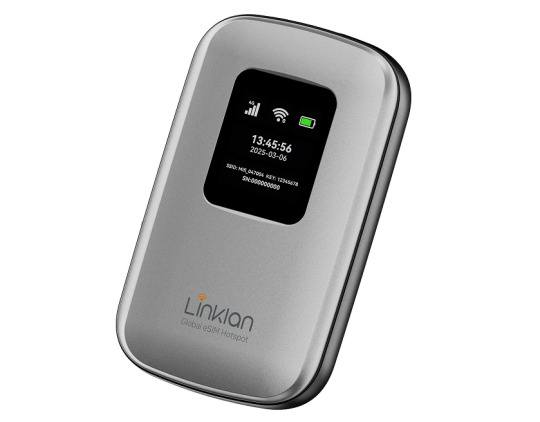
Product Recommendation
Linklan Global eSIM Hotspot is a portable Internet device that does not require a card. It has a built-in eSIM chip, supports instant Internet access, and can freely install operator packages that meet GSMA standards. The device is equipped with 4G LTE CAT6 high-speed network and a 5000mAh large-capacity battery, with stable connection and long battery life. Users can view the package traffic and connection status in real time through the App, and easily control the Internet experience. It is very suitable for travel, business trips, and outdoor office scenes.
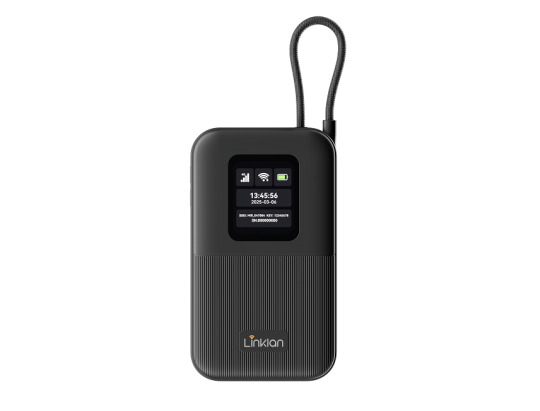
Linklan eSIM Hotspot Pro is equipped with a built-in eSIM chip, supports instant Internet access, can freely install operator packages that meet GSMA standards, and supports up to 16 devices to access the Internet at the same time. The device is equipped with 4G LTE CAT6 high-speed network and a 10000mAh large-capacity battery, with long battery life, and can be used as a mobile power bank to provide up to 22.5W fast charging for other devices. The package traffic and connection status can be viewed in real time through the App. Easily control the Internet experience. Meet the travel and office needs of multiple scenarios.
Exhibitor Introduction

Te-lead Technologies Co., Ltd
Booth number: 9C41
August 27–29, 2025
Shenzhen World Convention and Exhibition Center (Bao’an New Hall)
Company Profile
Te-lead Technologies mainly focuses on the agency and customized development of test equipment and fixtures for the Internet of Things, optical communications, high-speed interconnection and automotive Ethernet communications.
Mainly covers industry fields: RFID tag and reader testing, NFC tag and reader testing, optical modules, high-speed cables (data communication cables, Slimsas, HDMI and TypeC cables), high-speed chips, communication equipment and data centers, automotive Ethernet and other related enterprises and scientific research institutions.
In 2017, Te-lead Technologies officially became a strategic partner of CISC, dedicated to providing RIAN RFID/NFC R&D, design, and production customers with a full range of testing solutions, as well as fast Inlay or tag testing solutions integrated on the production line.
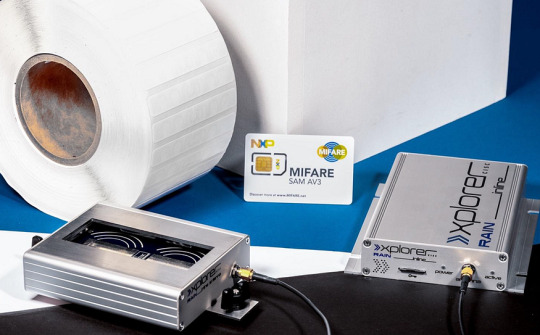
CISC RAIN Xplorer Inline
CISC RAIN Inline Xplorer: High-speed testing, encoding and encryption equipment for production line RFID inlays and tags. Can be integrated into any production line.
1. Main advantages
1) High-speed performance testing of tags on the production line, providing GPIO for external triggering, API for full automation, bad and weak tag marking options;
2) No reduction or limitation of production speed
3) Support for multiple test points
4) Support for multi-channel testing
2. Main features
1) Test frequency from 800 MHz to 1 GHz
2) Transmit power range from -10dBm to 28dBm
3) Sensitivity -80dBm
4) Read EPC, TID and memory data
5) Write EPC and storage area data (encode and write)
6) Measure the sensitivity of tags at different frequencies
7) Test time for a single EPC read starts at 6 milliseconds
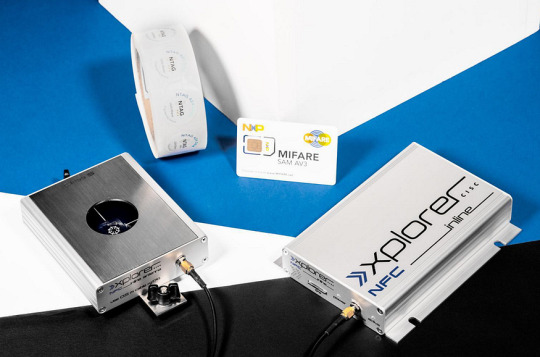
CISC NFC Xplorer Inline
NFC Xplorer Inline: High-speed test, encoding and encryption equipment for NFC Inlay and tags in the production line. Can be integrated into any production line.
Main advantages
1. High-speed performance testing of tags on the production line
2. No reduction or limitation of production speed
3. Support multiple test points
4. Support multi-channel testing
Main features
1. Variable H field strength
2. Full support for Class 1 to 6 tags
3. Support read/write mode for encoding and personalization
4. Provide GPIO for external triggering, API for full automation, bad and weak tag marking options;
5. Support ISO/IEC 14443 A+B and 15693 standards
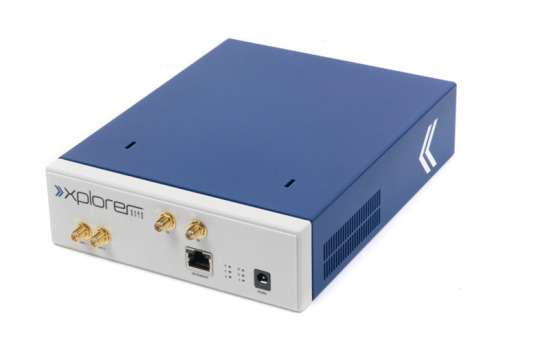
CISC RAIN Xplorer
RAID Xplorer: used to measure the performance and consistency of RFID Inlay, tags, readers and writers; RFID tag chip compliance testing. The sniffing function can monitor the communication between the reader and the tag
1. Tag performance test, regulatory test
1) Tag wake-up, reverse power and distance test
2) Tag direction sensitivity test
3) Tag reverse curve test
4) Tag data decoding, instruction timing, power and duty cycle measurement
5) ISO/IEC29167 encryption suite regulatory functions
6) Support SINIAV, ARTESP and Brasil-ID protocols
2. Reader performance test, regulatory test
1) Tx VS Rx sensitivity, BLF VS Rx sensitivity measurement.
2) Receiver sensitivity stability monitoring
3) Phase and impedance change on the impact of receiving sensitivity measurement
4) True reflection of the communication between the reader and the tag
5) Monitor the field strength through the tag simulation module
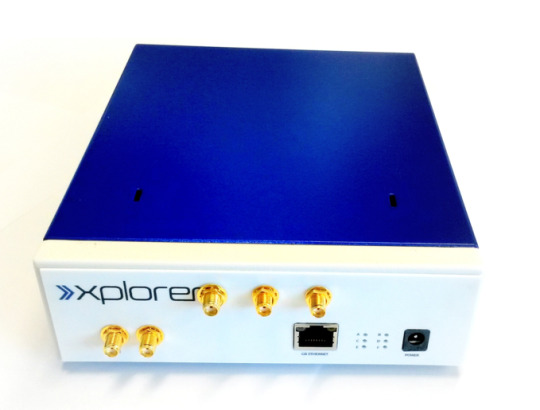
NFC Xplorer
NFC laboratory test instrument that measures the performance and consistency of NFC tags. NFC readers can be tested through the sniffer function.
Main features:
1. High accuracy
2. Fast and easy-to-use graphical user interface
3. Support multiple protocols
4. Standard and user-defined commands
Test mode:
1. Tag performance and consistency
2. Reader-to-tag communication and RF signal analysis
Supported standards and protocols
1. Communication protocol
ISO/IEC 14443 A
ISO/IEC 14443 B
ISO/IEC 15693,
ISO/IEC 18000–3M1
ISO 18092 NFC
2. Test standards
ISO/IEC 10373–6
ISO/IEC 10373–7
Exhibitor Introduction

LEADTECH IOT TECHNOLOGY(GUANG DONG)CO.,LTD
Booth number: 12B23–3
August 27–29, 2025
Shenzhen World Convention and Exhibition Center (Bao’an New Hall)
Company Profile
LEADTECH IOT TECHNOLOGY(GUANG DONG)CO.,LTD was founded by Chairman Miao Xinwei and the founding shareholders in 1980. Jintai Industrial Co., Ltd. was established in Taiwan. In 1990, a factory was set up in Dongguan, Guangdong. He led the management team and has been deeply involved in the lock industry and Internet of Things products for decades. At the same time, the self-created brand JTIC (Joining Technology, Innovation and Convenience) has a 24,000 square meter modern factory.
In recent years, it has expanded from industrial products to security, intelligence, electronics, information and other industries, taking into account practicality, safety, and personalized customization. In order to make the concept of guarding safety cover a wider range, combining technology, innovation and convenience, developing keyless series locks and Internet of Things products, combining lock devices with Bluetooth, NFC, NB-iot, Wi-Fi Zigbee Lora, etc., using APP, small program development and management cloud platform, to provide Internet of Things solutions for enterprises in various fields. Develop the company into a high-tech enterprise integrating Internet of Things products and automation equipment.
The company has all kinds of complete automated production, processing and testing equipment and a large number of technical talents, and has developed into a large international enterprise integrating development, manufacturing, marketing and service, with consistent operations from mold design, die-casting, injection molding, stamping, lathe processing, manufacturing, surface treatment, assembly, etc., specializing in professional locks, security and Internet of Things products.
Product Recommendation

Exhibitor Introduction

Xiamen Four-Faith Communication Technology Co.ltd
Booth number: 10B38
August 27–29, 2025
Shenzhen World Convention and Exhibition Center (Bao’an New Hall)
Company Profile
Four-Faith is a national high-tech enterprise, a national specialized and new small giant enterprise, and a leading enterprise of science and technology small giants. The company has always taken IoT communication technology as its core driving force, deeply integrated cutting-edge technologies such as 5G, IoT, AI edge computing, cloud computing and big data, and promoted the intelligent upgrading of the industry.
Four-Faith has built its own modern factory, with the R&D and manufacturing capabilities of the entire industry chain from communication modules, industrial terminals, edge computing gateways to platform software and artificial intelligence algorithms. In terms of product layout, the company has independently developed 5G/4G industrial-grade routers, smart gateways, data transmission terminals, AI visual equipment, IoT industrial computers, as well as LoRa, NB-IoT, ZigBee and other wireless communication modules and terminal products, covering the core links of IoT communications.
Product Recommendation
Intelligent AI Industrial Consultation Terminal
Four-Faith Intelligent AI Industrial Consultation Terminal has powerful intelligent diagnosis functions. It can monitor and analyze the multi-dimensional data such as current, voltage, temperature, vibration, etc. during the operation of industrial equipment in real time, and use advanced algorithms and big data models to predict the potential failure hazards of equipment in advance.
Just like an experienced old Chinese medicine doctor, it can accurately judge the condition through “looking, smelling, asking and palpating”, and issue early warnings before equipment failure occurs, so that enterprises can take timely measures to repair and avoid production interruptions. Not only that, after the equipment fails, it can also quickly locate the fault point, give detailed fault cause analysis and maintenance suggestions, help maintenance personnel quickly repair the equipment, greatly shorten the equipment downtime, and escort the production of enterprises.
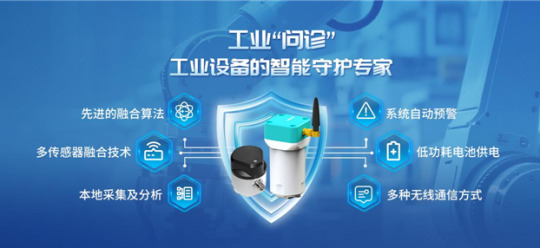
5G vehicle gateway
Four-Faith FTV300 is a high-performance 5G single Beidou vehicle gateway. The product supports 4G/5G high-quality communication, supports WiFi-6 technology, and can realize full-state detection of the whole vehicle; the full range of vehicle interface design provides a fast, stable and secure channel for the connection between the in-vehicle LAN and the Internet, and provides data-driven innovative operation and safety management solutions for urban commercial vehicles, enterprise factory and mine vehicles, etc. for the intelligent era.
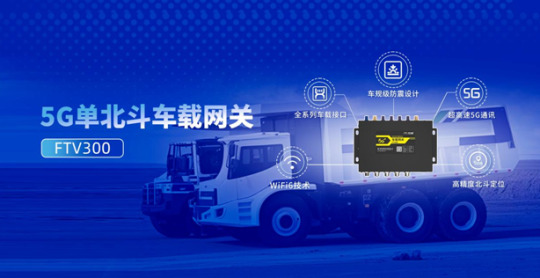
AI edge smart video box
Four-Faith AI edge smart video box is an edge intelligent analysis device developed based on the latest AIoT technology. It integrates data and image acquisition, high-speed wireless communication transmission, and edge intelligent computing into a new generation of intelligent Internet of Things products.
The product provides multi-dimensional perception capabilities and supports the access of multiple IoT perception devices. The high-performance processor and system architecture can perform multi-target detection and multi-dimensional intelligent perception decision analysis combined with data and images on the edge side. The series of products support secondary development and customization of software, hardware and algorithms for different application scenarios, and are widely used in various intelligent benchmark projects.
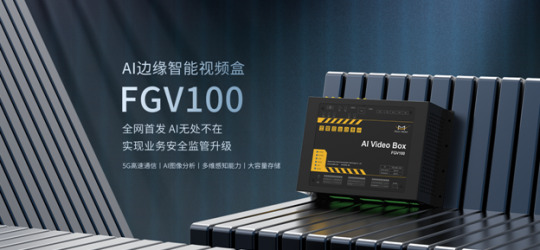
At present, industry trends are changing rapidly, and it is crucial to seize opportunities and seek cooperation. Here, we sincerely invite you to participate in the IOTE 2025, the 24th International Internet of Things Exhibition, Shenzhen Station, held at the Shenzhen World Convention and Exhibition Center (Bao’an New Hall) from August 27 to 29, 2025. At that time, you are welcome to discuss the cutting-edge trends and development directions of the industry with us, explore cooperation opportunities, and look forward to your visit!
0 notes
Text
Functional Printing Market Size Transforming Manufacturing Through Smart, Printed Innovation
The Functional Printing Market Size is reshaping modern manufacturing by enabling the direct printing of functional components such as circuits, sensors, displays, and batteries onto various substrates. This revolutionary approach bridges the gap between traditional printing and advanced electronics, enabling flexible, lightweight, and cost-effective components for multiple industries. According to Market Size Research Future, the global functional printing Market Size is projected to reach USD 45.4 billion by��2030, expanding at a CAGR of 20.4% during the forecast period.
Market Size Overview
Functional printing involves the use of conductive inks, dielectric materials, and substrates to fabricate working devices. Unlike conventional printing, which is primarily decorative or informative, functional printing creates electronics that can perform tasks such as sensing, lighting, and energy storage.
Industries including consumer electronics, automotive, packaging, healthcare, and aerospace are integrating functional printing into their product development processes. Applications like printed RFID tags, OLED displays, solar panels, smart labels, and wearable sensors are expanding rapidly, driven by the demand for miniaturization, flexibility, and lower production costs.
Market Size Segmentation
By Technology:
Inkjet Printing
Screen Printing
Flexography
Gravure Printing
Offset Printing
By Material:
Substrates (Glass, Plastic, Paper, Others)
Inks (Conductive Inks, Dielectric Inks, Others)
By Application:
Displays
Sensors
Batteries
Lighting (OLED, EL)
RFID Tags
Photovoltaics
By End-User Industry:
Consumer Electronics
Automotive
Healthcare
Packaging
Aerospace & Defense
Retail
By Region:
North America
Europe
Asia-Pacific
Rest of the World
Key Market Size Trends
1. Surging Demand for Wearable Electronics
Wearables such as fitness trackers, smartwatches, and biomedical patches are driving the demand for flexible and lightweight electronics made via functional printing. The technology allows for sensors to be printed directly onto fabrics or skin-compatible substrates.
2. Printed OLED Displays and Lighting
Flexible displays and OLED lighting panels made via functional printing are being deployed in consumer gadgets, automotive interiors, and signage due to their durability and design versatility.
3. Growth of Smart Packaging and RFID
Functional printing enables cost-efficient mass production of smart packaging solutions with printed RFID/NFC tags, indicators, and sensors—enhancing inventory management, authentication, and consumer engagement.
4. Expansion of Printed Photovoltaics
Functional printing is facilitating the development of lightweight, flexible solar panels that can be integrated into windows, backpacks, or buildings for sustainable energy generation.
Segment Insights
Inkjet Printing Gains Strong Traction
Inkjet printing is favored for its precision and ability to deposit fine features at high resolution, making it ideal for sensors, RFID tags, and thin-film transistors. It also supports a wide range of functional inks.
Conductive Inks Drive Innovation
Silver nanoparticle-based conductive inks are enabling high conductivity in printed electronics. Carbon-based and graphene inks are also emerging as eco-friendly alternatives for next-gen devices.
Displays and Sensors Dominate Applications
Displays (OLEDs, e-paper) and sensors (temperature, pressure, biosensors) account for the largest share in functional printing due to demand across healthcare, consumer electronics, and automotive sectors.
End-User Insights
Consumer Electronics:
Functional printing enhances device portability, flexibility, and performance—enabling innovations like foldable phones, touch-sensitive surfaces, and printed antennas in smartphones.
Automotive:
The automotive industry is leveraging printed electronics for in-vehicle displays, flexible lighting, and touch sensors integrated into dashboards and control panels.
Healthcare:
Printed biosensors, drug-delivery patches, and diagnostic devices offer cost-effective, disposable, and real-time monitoring solutions in personalized medicine and remote care.
Packaging and Retail:
Smart labels and interactive packaging improve brand engagement, track products through the supply chain, and authenticate goods to reduce counterfeiting.
Key Players in the Functional Printing Market Size
Several companies are driving the functional printing ecosystem with innovations in materials, printing platforms, and scalable manufacturing. Leading players include:
BASF SE
E Ink Holdings Inc.
NovaCentrix
LG Display Co., Ltd.
Thin Film Electronics ASA
Xaar Plc
Eastman Kodak Company
T+Ink, Inc.
Blue Spark Technologies
PARC (A Xerox Company)
These firms are collaborating with research institutions and OEMs to scale up production while enhancing the electrical performance and durability of printed components.
Conclusion
The Functional Printing Market Size is set to disrupt conventional manufacturing by enabling on-demand, high-speed, and cost-effective production of functional electronic components. Its versatility across materials and applications positions it as a transformative force across sectors—from smart packaging to flexible wearables and solar power. With innovation accelerating and costs declining, functional printing is poised to become the backbone of future electronics manufacturing.
Trending Report Highlights
Explore related Market Sizes shaping the future of printed electronics, smart systems, and industrial technology:
Hearables Market Size
Industrial Metrology Market Size
Inspection Analysis Device Market Size
Gaming Monitors Market Size
HVDC Capacitor Market Size
Intrinsically Safe Equipment Market Size
Capacitor Market Size
Digital Workspace Market Size
AI Audio Video SoC Market Size
Robotic Arms Market Size
Oil & Gas SCADA Market Size
Molded Interconnect Device Market Size
0 notes
Text
Kia Service Centre Jammu | Kia Seltos Jammu | Kia Syros Jammu
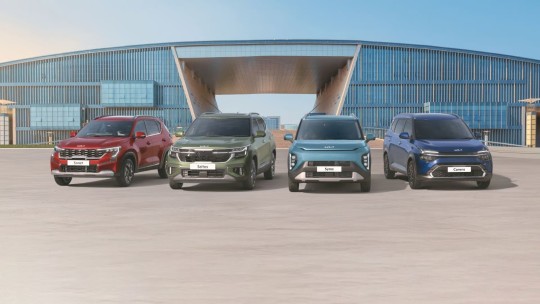
Kia Service Centre in Jammu
Keeping your car in top condition is just as important as buying the right one. A Kia service Centre in Jammu provides you with certified technicians, genuine spare parts, and advanced diagnostic tools to ensure your car is always running smoothly.
Kia Service Centre Jammu
The Kia Service Centre Jammu is trusted by thousands of customers who value quality and timely service. With a dedicated service team, well-equipped infrastructure, and transparent pricing, you can rest assured that your Kia is in safe hands.
Kia Seltos
The Kia Seltos is one of the most popular SUVs in its segment — known for its bold styling, premium interiors, and powerful performance. It offers advanced features like UVO connectivity, ventilated seats, air purifier, and drive modes—ideal for city commutes and weekend trips.
Kia Seltos Jammu
If you’re planning to explore or purchase the Seltos, visit the Kia Seltos Jammu showroom where expert staff will guide you through the different variants, colour options, and financing deals available.
Kia Seltos in Jammu
Don’t just hear about the buzz — experience it for yourself. The kia Seltos in Jammu delivers performance, style, and technology in one well-packaged SUV.
Kia Syros
The Kia Syros is Kia’s answer to the future of mobility. With its aerodynamic design, intelligent tech features, and eco-efficient performance, it represents a new era in automotive innovation.
Kia Syros Jammu
Step into the future by visiting the Kia Syros Jammu dealership. Here, you can explore every feature the Syros has to offer. Whether it’s advanced infotainment, futuristic lighting, or its seamless connectivity options, the Syros is made for those who expect more from their SUV.
Kia Syros in Jammu
Get ready to redefine your driving expectations with the Kia Syros in Jammu. This SUV is engineered for both performance and sustainability, making it ideal for modern drivers.
Kia Sonet
The Kia Sonet brings together a compact design with bold performance. It’s built for the city and beyond, offering features like a 10.25-inch touchscreen, wireless charging, drive modes, a bose sound system, and exceptional fuel efficiency.
Kia sonet Jammu
Visit Kia sonet Jammu and explore the various trims and features that make the Sonet a favourite among the youth and families alike. Our staff will help you explore the options, arrange test drives, and assist in booking your very own Sonet.
Kia Sonet in Jammu
If you want a stylish, affordable, and tech-rich SUV, the Kia Sonet in Jammu should be at the top of your list. Compact in size but massive in performance and features, the Sonet fits right into the lifestyle of modern city drivers.
Related Tags
Kia service centre in jammu, Kia Service Centre Jammu, Kia Seltos , Kia Seltos Jammu, kia seltos in jammu, Kia Syros , Kia Syros Jammu , Kia Syros in jammu, Kia Sonet , Kia Sonet Jammu , Kia Sonet in jammu
#kia service centre in jammu#Kia Service Centre Jammu#Kia Seltos#kia seltos jammu#kia seltos in jammu#Kia Syros#Kia Syros Jammu#Kia Syros in jammu#Kia Sonet#Kia sonet Jammu#Kia sonet in jammu
0 notes
Text
Jumpstart Your Career with an Automotive Apprenticeship in Philadelphia
Launch a hands-on career with an automotive apprenticeship in Philadelphia. At PTTI, you'll receive expert training, real-world experience, and earn while you learn. Our auto tech apprenticeship program helps you build job-ready skills, earn certifications, and secure employment—all without student debt. Whether you're looking for a mechanic apprenticeship in PA or a full automotive trade apprenticeship in Philly, PTTI’s programs are designed to get you working faster. Start your future today with one of Philadelphia’s most trusted paths into the auto industry.
Related tags : automotive apprenticeship Philadelphia programs, paid mechanic apprenticeship in Philadelphia PA,
#automotive apprenticeship Philadelphia programs#paid mechanic apprenticeship in Philadelphia PA#auto tech apprenticeship training Philadelphia#automotive trade schools with apprenticeships Philly#PTTI automotive apprenticeship Philadelphia#how to become an auto technician in Philadelphia#hands-on mechanic training programs in Philly#certified automotive apprenticeship near me Philadelphia#Philadelphia auto mechanic career training#job-ready auto repair apprenticeship in Philadelphia
0 notes
Text
Innovating Safety: Automotive Passive Safety System Market
Driving Toward Zero Fatalities: The Rise of Automotive Passive Safety Systems
In a world obsessed with speed, performance, and sleek design, the unsung hero of the automotive industry quietly saves millions of lives every year — the passive safety system. From high-end sedans to entry-level hatchbacks, these invisible protectors stand guard, ready to cushion, shield, and absorb at the most critical moments. The automotive passive safety system market isn’t just about airbags and seatbelts — it’s about redefining how humans and machines coexist on the road.
As the automotive landscape races into a new era defined by electrification, autonomous capabilities, and futuristic design, passive safety systems are evolving with equal vigor. What was once a basic seat restraint is now a complex interplay of sensors, crumple zones, impact detection algorithms, and intelligent restraint mechanisms — all working in perfect harmony to keep lives intact when the unexpected happens.

More Than Just Protection: It’s Innovation in Motion
Today’s vehicles are essentially computers on wheels, and passive safety systems are benefitting from this tech evolution. Take modern airbags, for example — they no longer deploy just because of a front impact. Sophisticated sensor arrays now calculate the size of the occupant, the severity of the crash, and even whether the seat is occupied before triggering. This level of precision reduces injuries while increasing survival rates dramatically.
Seatbelt technology has also come a long way from the simple lap belts of the 1960s. Pretensioners, load limiters, and active seatbelt systems tighten or release based on crash scenarios. Even headrests are now engineered to prevent whiplash with active mechanisms that respond faster than the blink of an eye.
These advancements are not limited to luxury vehicles. In fact, regulatory bodies worldwide are pushing for passive safety systems to become standard in every car — regardless of its price tag — signaling a future where safety is democratized.
Expert Market Research Highlights Industry Traction
According to Expert Market Research, the automotive passive safety system market forecast points toward sustained growth driven by stringent global safety regulations, rising consumer awareness, and advancements in vehicle design. Their insights highlight how the integration of crash impact mitigation technology and vehicle occupant protection systems is evolving beyond traditional applications. As manufacturers align with future-ready safety standards, the forecast underscores a surge in demand for intelligent passive restraint systems across electric and autonomous vehicle segments. This growing emphasis on safety-centric design is not just influencing OEM strategies but also reshaping the global automotive safety component landscape.
EMR’s insights further underline how manufacturers are investing heavily in R&D to optimize passive safety components without compromising aesthetics or vehicle weight — a crucial factor in achieving both fuel efficiency and enhanced protection. As brands compete for safety ratings and consumer trust, passive safety systems are emerging as key differentiators in vehicle design and marketing.
Seamless Integration with Active Systems: The New Safety Paradigm
The boundary between passive and active safety is increasingly blurring. While passive systems are reactive by nature — designed to work when an accident occurs — their synergy with active systems like automatic emergency braking (AEB), lane departure warnings, and adaptive cruise control creates a holistic safety environment.
Imagine a situation where a car senses an imminent collision. Active systems apply the brakes, attempt to steer clear, and alert the driver. If the crash is unavoidable, the passive safety system takes over — tightening the seatbelts, adjusting the seat position, pre-tensioning the airbags, and preparing the crumple zones. This predictive orchestration is the future of vehicle safety, and passive systems are no longer just mechanical backups — they’re integrated into the digital nervous system of the car.
Fueling Consumer Confidence with Smart Design
Consumer behavior has also shifted. Buyers now research safety ratings before aesthetics or performance. Modern car advertisements frequently highlight safety credentials as a badge of honor — and rightly so. Features like side-curtain airbags, anti-submarine seats, and energy-absorbing steering columns aren't just checkboxes; they're proof of a manufacturer's commitment to its customers' lives.
In developing countries, where the surge in car ownership is accompanied by rising road accidents, automotive passive safety systems are no longer optional. Government mandates and crash-testing protocols are raising the bar, nudging even cost-sensitive manufacturers to innovate.
Future Roadmap: Lightweight, Sustainable, and Autonomous-Ready
Looking forward, the automotive passive safety system market is poised to meet the needs of a radically transformed driving ecosystem. As electric vehicles (EVs) become mainstream, their unique chassis layouts are reshaping how safety systems are integrated. Without an engine in the front, crumple zones must be reimagined. Battery packs located beneath the cabin require reinforced underbody protection. Likewise, the absence of traditional control inputs in self-driving cars calls for adaptive safety configurations that consider passengers in various seating positions.
Moreover, sustainability is playing an important role. Manufacturers are exploring bio-based foams for cushions, recycled polymers for trim, and advanced composites for frames that offer protection without adding weight. The challenge is complex, but so is the innovation.
#Automotive Passive Safety System Market#Automotive Passive Safety System Market Insights#Automotive Passive Safety System Market Analysis
0 notes
Text
The Future of Car Buying: Why Online Marketplaces Are Taking Over

The automotive industry is shifting gears—and fast. Where once buying a car meant weekends spent visiting multiple dealerships, today’s buyers are turning to their phones and laptops instead. Online marketplaces are quickly becoming the go-to destination for purchasing vehicles, offering a level of convenience, transparency, and variety that traditional showrooms often can't match. This change is not just a trend—it’s the future of car buying.
Convenience, Comparison, and Control: The Digital Edge
One of the main reasons online marketplaces are growing in popularity is the convenience they offer. Car buyers no longer have to deal with high-pressure sales environments or limited local inventory. With a few clicks, users can access thousands of vehicle listings, filter results based on preferences, and compare models, prices, and features—all from the comfort of home.
This level of control empowers buyers to make informed decisions. Whether you're looking for a fuel-efficient compact car or a spacious SUV, online platforms allow you to customize your search to suit your needs. You can view high-quality images, read full specifications, and even see vehicle history reports or owner reviews before taking the next step.
Moreover, the rise of online tools such as price calculators, EMI estimators, and trade-in evaluators gives users a complete understanding of their financial commitment. With these resources, people can budget smartly and avoid unexpected costs down the road. Many marketplaces also connect buyers directly with sellers or verified dealers, cutting out the middlemen and often reducing overall costs.
Trust, Transparency, and the Rise of Pre-Owned Vehicles
One of the biggest concerns buyers face when shopping for cars online is trust. Can you really rely on what you see on screen? The answer lies in how far online platforms have come in improving transparency. Verified listings, certified pre-owned tags, detailed inspection reports, and customer ratings all contribute to building buyer confidence.
This is especially important in the growing market of pre-owned vehicles. Used cars are no longer seen as a compromise, but a smart financial decision—especially when they come with proper documentation, a warranty, and lower depreciation costs. The best pre-owned automobiles marketplace in UAE now provides a platform where buyers can access high-quality used vehicles that have been thoroughly checked, often by trusted professionals.
This shift toward online shopping for secondhand cars has been driven not just by convenience, but also by necessity. With busy lifestyles and growing internet access, people are less willing to spend days visiting multiple sellers. They want quick, reliable solutions—and digital marketplaces deliver just that.
Final Thoughts
As we move into a more connected and digital future, the way we buy cars will continue to evolve. Online marketplaces are making the process more transparent, efficient, and customer-friendly. For both new and used vehicles, these platforms offer greater variety, better pricing, and unmatched convenience.
The role of the dealership is changing, and it’s clear that buyers now hold more power than ever before. By turning to the best pre-owned automobiles marketplace in UAE, car buyers are embracing a smarter, faster, and more reliable way to make one of life’s biggest purchases.
The future of car buying isn’t coming—it’s already here. And it's parked just a click away.
0 notes
Text
Data Annotation Specialist: The Backbone of AI Accuracy

Introduction:
In today's AI-driven world, data is the new gold—but only if it's annotated accurately. Data Annotation Specialists are the unsung heroes of machine learning, turning raw data into training goldmines. Whether it's labelling images, transcribing audio, or categorizing text, their work shapes the future of smart technology. Here's a deep dive into what they do and why platforms like GTS Dash are reshaping this essential role.
1. What Does a Data Annotation Specialist Do?
A data annotation specialist meticulously labels and organizes large datasets so algorithms can learn patterns effectively. Common tasks include:
Image Annotation: Drawing bounding boxes, segmenting objects, tagging facial expressions.
Text Annotation: Tagging sentiment, topics, named entities, or user intent.
Audio & Video Annotation: Transcribing speech, identifying speakers, labeling sounds or actions.
Sensor/Data Logging: Tagging events in time‑series data (e.g. IoT signals).
These precision tasks may seem tedious, but they’re fundamental—after all, AI models only learn from what they’re trained on.
2. Why is Data Annotation So Important?
Accuracy Matters: Flawed or incomplete labels lead to misinterpretations—when self‑driving cars confuse a pedestrian for a bicycle, lives are at risk.
Human Touch vs. Code: Machines don’t “get” context or nuance. Specialists add cultural insight and real-world understanding.
Regulation & Ethics: Layered annotation can help audit AI decisions, reducing bias and improving fairness.
In sum, accurate annotation prevents flawed AI outcomes and helps build trustworthy technology.
3. Skills & Tools Every Specialist Needs
Attention to Detail: A single mislabel can distort an algorithm’s performance.
Domain Knowledge: Expertise in medical, legal, automotive, or financial fields is often critical.
Tool Familiarity: Proficiency with annotation platforms, quality‑check processes, and bulk labeling tools.
Communication: Ability to work closely with data engineers, QA specialists, and project managers.
Modules or certification in data science, linguistics, or visual computing can be a plus.
4. GTS Dash: Connecting Specialists with Quality Projects
GTS Dash simplifies the data annotation landscape for both freelancers and businesses. Here's what makes it stand out:
Core Features for Data Annotation Professionals
Diverse Task Types: From image bounding boxes to sentiment tagging, choose projects that match your expertise.
Flexible Work Environment: Pick assignments that align with your schedule—work full-time, part-time, or project-based.
High-QuaSecure & Transparent Payments:lity Standards: Tasks include detailed instructions and QA checks to maintain consistency.
Rates and timelines are defined upfront; payments are timely and reliable.
For companies, GTS Dash ensures high-quality output; while professionals benefit from steady work and trustable workflows.
5. How to Become a Successful Data Annotation Specialist
If you're aspiring to step into this role, here’s a clear action plan:
Assess Your Domain Strengths – Proficiency in specific fields (like medical imaging or legal documents) makes you more competitive.
Master Annotation Tools – Get hands-on experience with popular tools like Labelbox, VoTT, Prodigy, or GTS Dash’s own platform.
Launch on GTS Dash – Create a compelling profile, highlight relevant experience, and apply to suitable tasks.
Over‑Deliver – Accuracy and consistency will shine in your reviews—building trust and repeat clients.
Network & Upskill – Join forums related to data science, machine learning, and annotation to stay tuned and learn new trends.
6. Future Outlook: Growing Demand & Specialization
The demand for labeled data continues to grow across industries like healthcare, automotive, finance, and e-commerce—all hungry for AI enhancements. In response, annotations are getting more specialized, focusing on:
Clinical imaging (X-rays, MRI)
3D scene parsing (LiDAR point clouds for autonomous vehicles)
Emotion or intent detection (audio/text for virtual assistants)
Fraud detection signals (in transaction data)
As AI matures, annotation roles will evolve too—moving from generic labeling to high-stakes domain-focused tasks.
Final Thoughts
Data annotation specialists are the linchpin of any AI system. Without clean, consistent, and nuanced data labeling, even the most advanced algorithms fail to perform. Platforms like GTS Dash provide structured access to real-world annotation work, empowering professionals and organizations alike.
If you’ve got a sharp eye, domain knowledge, and an interest in contributing to cutting-edge AI, data annotation is a powerful and accessible entry point. Dive into GTS Dash today—your annotation skills could power the next wave of smart technology.
0 notes